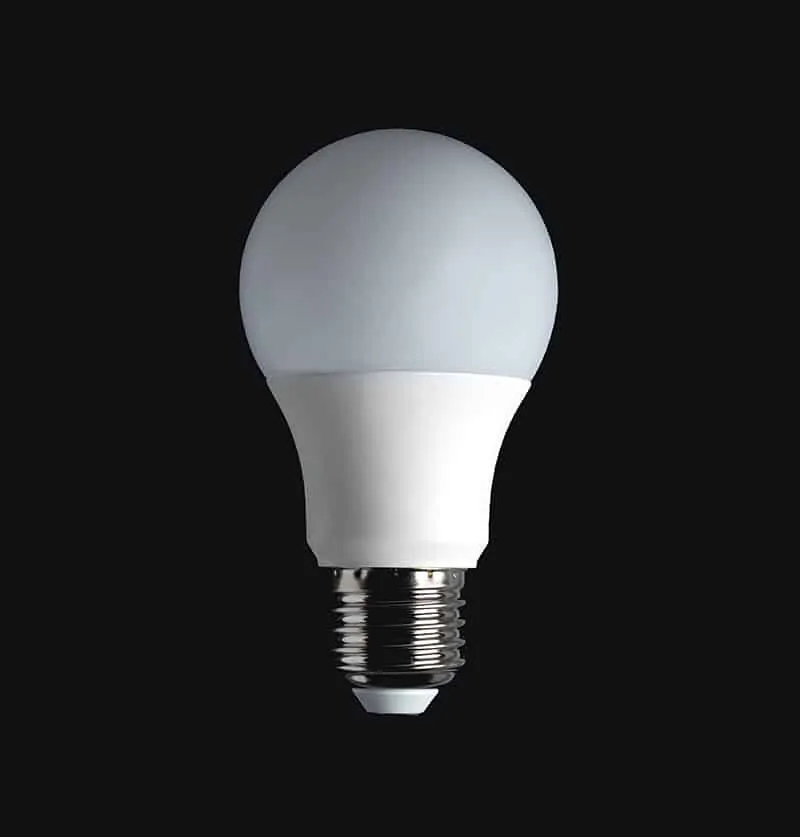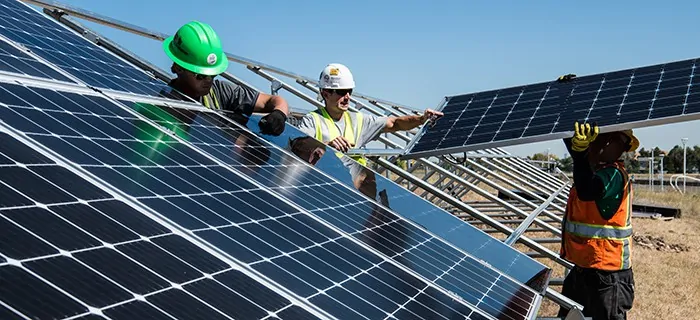An efficient and sustainable building is paramount to saving both money as well as helping a business go green.
While efficiency upgrades to a building may seem difficult and expensive, the truth is quite the opposite when you have the right partner.
In mid-2016, we met with the director of operations of a K-12 school in the greater Boston area. We handled their energy procurement which, due to budget certainty needs, was an all-in fixed price. We successfully leveraged market timing with this fixed all-in tailored purchasing strategy which resulted in us capturing a 17-year low for their contract!
Compared to the default utility service they were on, the price we seized saved them $55k over the course of their 3-year contract. However, it wasn’t until we got our hands on their latest efficiency project that we were able to dial up their energy cost avoidance!
The Lighting Upgrade Project
While executing the consultation and designing a contract for the school, the director of operations informed us that they were working on an efficiency project.

Their plan was to upgrade all of the fluorescent lighting on both the school’s interior and exterior campus to energy efficient LED technology. They had already gotten the ball rolling with a lighting company and asked us to take a deeper look at their plan.
The initial cost of the proposed project was $270,040 and the rebate the school was set to receive from Eversource’s utility incentive program was $45,129. At first glance this all seemed like a good deal, however, we asked our Energy Services Division to take a closer look at the details of the proposal.
Our Energy Services Division
Because we understand the financial and environmental impact of making buildings more efficient and sustainable, our Energy Services Division is designed to help businesses navigate the convoluted waters of efficiency and renewable energy projects like solar energy, microgrids, fuel cell systems, and many others.

We sent the school’s lighting enhancement proposal directly to the Director of our Energy Services Division, Jordan Berman, CEM.
Berman took a comprehensive look at the proposed project, examining every line of the proposal with a fine-toothed comb. He was able to uncover some discrepancies as well as a few ways to enhance it that would save the school even more than they were anticipating.
Once complete, he went to the director of operations and developed a plan of attack that started with correcting the utility incentive program they were put in.
Utility Incentive Program
A utility incentive program is an option offered by all utilities that allows energy users to make their facilities more efficient and receive a rebate for the kW, kWh, and/or Dth they saved.
In pulling apart their proposal, Berman realized that the lighting vendor did not fully utilize all of the qualifications on the available utility programs. Because of this, the school was evaluated for a less-favorable utility incentive program that treated them like a very large customer. This reduced the rebates the school would receive from their new, lower electricity load.
He met with the utility, Eversource, and came to an agreement with them to split the proposal into two separate projects to make the total load smaller. By splitting the school’s project in two, the first cost avoidance they saw on their contract was a $95k rebate increase from the utility!
Negotiating the Total Cost
The next element our Energy Services Division took on was the total cost of the project. As this was far from Berman’s first efficiency project, he saw an opportunity to reduce the cost of the entire project as the price of the installations and materials seemed too high.
Over the course of multiple rounds of negotiations with the lighting enhancement company, Berman was able to not only add additional fixtures to the plan, but also reduce the total cost of the project from $270,040 to $262,953!
Finding Financing Solutions
While efficiency programs and projects are financially beneficial in the long run, the initial cost to start them can be daunting.
Because of this, helping our clients figure out how to finance their efficiency project is something that is always in focus for our Energy Services Division.
Following many deliberations, negotiations, and meetings, Berman was able to source 3 different financing solutions for the school to choose from:
- 3rd party financing through a commercial lender
- Financing through an energy supplier’s efficiency program funding
- Utility efficiency funding on-bill program
Berman laid these 3 options in front of the director of operations with all their pros and cons.
They ended up choosing Eversource’s utility efficiency on-bill funding as it was the lowest cost and allowed them the option to pay over the course of 24 months right from their bill, which is not a typical option for a project scope like this. As a kicker, Berman was even able to get Eversource to agree to add 0% interest on the entire project cost!
Return On Investment
The true return on investment (ROI) from efficiency and renewable energy projects usually occurs years after the project finishes. The advantage of efficiency projects is not getting money right away; it’s avoiding significant costs for multiple years going forward in dollars, maintenance, and energy.
Our Energy Services Division put a lot of work into restructuring the project, correcting the utility program, improving the project’s scope, and researching financing options. As a result, the school experienced significant improvements to the overall ROI of the entire project.
By negotiating with the utility to change the proposal into two separate projects, we increased their annual incentive payout by $94,991, resulting in a total of $140,120.
Through negotiations with the lighting enhancement company and retooling the entire proposal, we reduced the total cost of the project from $270,040 to $262,953. Even with this reduction we were still able to add new fixtures onto the project at no additional cost.
Time to ROI
As a result of Berman and the Energy Services Division’s hard work, we were able to reduce the time it took for the school to see ROI from the project by 2.5 years:
- Pre-BPE Involvement: 5.78 Years ROI
- Post-BPE Involvement: 3.16 Years ROI
When we presented all of our new financial projections, the director of operations couldn’t wait to report to the board that they would be seeing the ROI from this project in significantly less time than initially proposed!
Environmental Impact
The monetary gains from this project exceeded all expectations for the school, but what actual impact did it have in reducing their carbon footprint?
Once all of the old lighting was replaced by efficient LEDs, the school’s annual consumption (kWh) was reduced by a whopping 25%. Putting it into perspective, this reduction was the equivalent of removing 28 cars off the road for a year or 220,000 lbs of Co2 offset!
At the end of the day, Mr. Berman and our Energy Services Division were able be an effective advocate for the school to boost incentives, reduce rates, find the right financing program, reduce time to see ROI, and help significantly reduce their carbon footprint.
Our Energy Services Division does not just help navigate LED efficiency projects; they also do a lot of the same type of work with renewable energy projects like solar and wind as well as demand response programs, microgrids, and more.
As we believe a sustainable and efficient facility is important for both a user’s financial standing as well as in helping our country meet its carbon goals, part of our free electricity and natural gas consultation for new clients is an efficiency consult.
Contact us today to find out if an efficiency project would be beneficial to your business!

